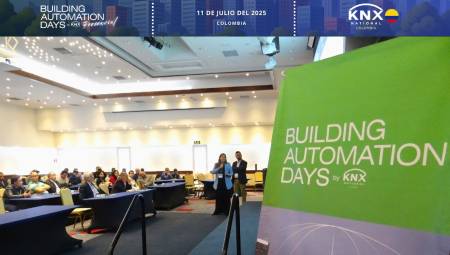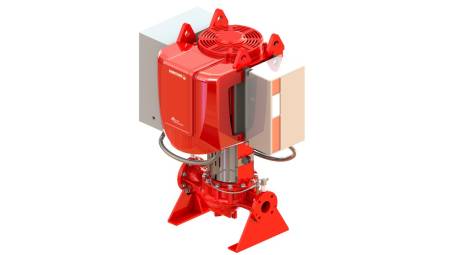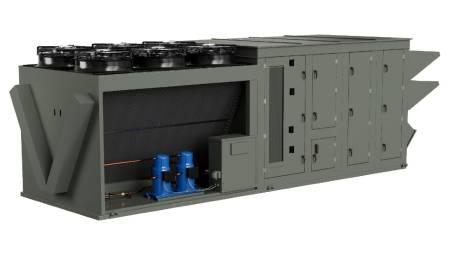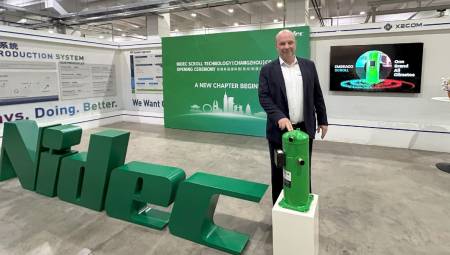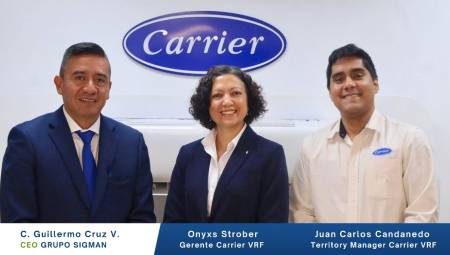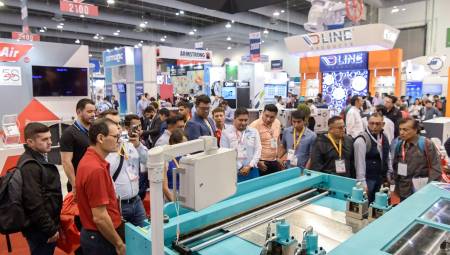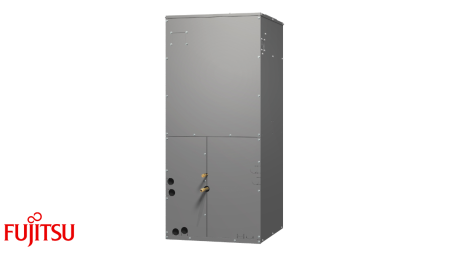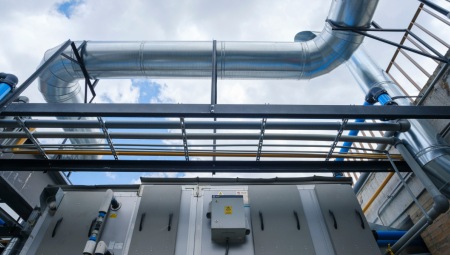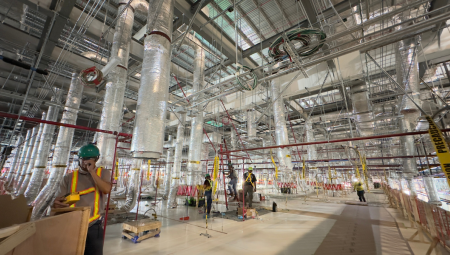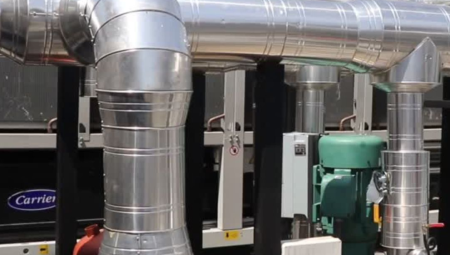 In the following article the author proposes eight strategies to transform existing constructions into intelligent buildings. This transformation will not only result in environmentally friendly structures, but also in better economic benefits for the owner.
In the following article the author proposes eight strategies to transform existing constructions into intelligent buildings. This transformation will not only result in environmentally friendly structures, but also in better economic benefits for the owner.By: Jim Sinopoli*
With greater focus and visibility on the concept of new construction, we tend to change the market to make existing buildings smart and green (green) facilities. Knowing that existing buildings make up 99% of the construction inventory, there is no reason why current properties can't be smart or as green as new construction. What follows is a discussion on some implementation issues in existing buildings, along with an eight-step strategy to achieve better performance in these.
Overview
Existing buildings come with their luggage and already have technological systems installed. Some of the implementation issues include:
- A number of systems, especially automation systems, will use private or legacy network protocols, which will require switching to open protocols. Generally, this may involve the use of gateways or some kind of middleware to translate the protocols.
- Cable paths are missing in existing buildings, resulting in increased use of wireless devices.
- There are problems related to the abandoned cable. The National Electrical Code requires that unused wires be removed during renovations. This can increase the time and cost of a project.
- Organizational issues related to building management, security, and information technology may occur that have been established as separate departments and will most likely not help much in the implementation of an integrated method.
Despite the challenges, the financial metric of improving a building's performance and adding appropriate technology services can be more compelling. Investment in an existing building is recouped in several ways: better operating and energy costs, lower costs in tenant improvements, high rent, asset valuation, and a positive effect on capital planning.
Deployment
Although many building owners find the concept of improving the performance of existing buildings persuasive and intuitive, they also struggle to shift from simple concept to actual deployment. Here's an eight-step strategy to successfully improve the performance of your existing buildings:
Discovery process
Generally, the information available on system performance in existing buildings is scarce. For example, if the building is using a typical BAS terminal from one of the major manufacturers, the system will likely offer more unprocessed data than usable, actionable information. Despite the small amount of data, gather as much information as possible and analyze it to get a better picture of building performance and identify trends, pain points and opportunities. Gather information about the capabilities and characteristics of existing systems, what similar properties have been realized, what energy use and costs are given to the building, and what has generated most of the maintenance work on the building. Talk to tenants and any contractors to find out what changes or improvements they think would be important. Physically inspect all systems.
Performance benchmark
The only way to determine the effectiveness of building system improvements is to have a baseline. After making the improvements, you will want to make a "before" and "after" comparison so that you can judge the effectiveness of the improvements. Have a benchmark with current energy usage, energy cost, and the number and type of work orders. Conduct surveys with tenants or occupants in relation to their current satisfaction in relation to lighting, security, technological services, etc.
Search for LEED Certification
Recent studies have shown that LEED Certification has a positive financial effect on the value of a building. Therefore, if a building owner is improving systems and wants to add financial value, it makes sense to seek the incorporation of LEED Certification as part of the strategy.
An important part of the LEED Certification for Existing Buildings (which is based on operations and maintenance) is system improvement. Much of what is usually proposed as a strategy for existing buildings can meet some of the LEED criteria. LEED Certification for existing buildings also requires solving problems other than system improvement; that is, matters such as recycling, outdoor maintenance programs, and cleaning and maintenance issues.
Prioritize and fund the effort
Prioritize and sequence system improvements, based on potential financial gains and technical analysis. If you have a real estate portfolio, prioritize one building-by-building base and choose a couple of buildings to use as pilot projects.
Set a budget for improvements and commit funding. If financing is an inconvenience, consider using an ESCO (Energy Services Company). Energy Service Companies essentially execute energy performance contracts. Initially, they may be paid a fee for audits and feasibility study. ESCOs can then determine the cost of energy system improvements, potential energy savings, and put together a business case to fund the costs of improvements in consideration of a portion of the energy savings. Some ESCOs may even fund non-energy technology upgrades, again depending on the particular business case.
HVAC and Lighting Controls
You'll want to make sure that major power-related systems are improved so that they perform optimally. Before changing any mechanical or electrical system hardware , you will probably need to improve the control systems and application software of the system terminal. This will usually allow the owner to obtain the necessary information about the systems, their use and their problems before investing in more expensive electrical and mechanical upgrades. Some system problems may not be mechanical or electrical, but may involve sequences of operation, changed use of rooms, undocumented system changes, etc. Obtaining the information through a new set of controls and operator software will give you an idea of how to get the systems back into service in an effective and efficient way.
HVAC System Operation
With the information obtained from the new control system and physical inspection, the HVAC system must be put back into service. Perform any necessary hardware upgrades or replacements. Studies have shown that putting systems back into service in a commercial office space takes on average 9 months. In a hospital environment, where energy use can be 2.5 times that of commercial space, this time can be measured in weeks.
Improve safety, technology and energy
The decision of which systems need to be updated is made based on the calculation of investment gains. That is, will operating costs go down, lower energy costs, or offer a basis for increasing rents? Security systems obviously need to offer appropriate security, but they also need to be integrated into lighting and HVAC control. A particular access control system can offer information (i.e., number of people in an area, when people are in an area, etc.) that can be used to adjust and manage HVAC and lighting systems. To better manage the energy inside the building, you will need to add sensor systems (CO2 sensors, occupancy sensors, etc.) that measure all energy and utility systems and an energy management system, if the building does not have them. Finally, if your building is a commercial office space, examine the technology services that tenants may perceive to have value. The idea is to convert "value" into higher rental prices and for tenants to rent for longer periods. These systems may include digital signage, building-wide Wi-Fi, and a Distributed Antenna System (DAS) that improves cellular coverage.
Monitoring and operation of systems
All system improvements, re commissioning and LEED Certification are unsuccessful if the right tools and personnel are not used to be able to monitor, manage the systems and maintain the performance of the building in an optimal state.
This is where open systems are especially important, so that data from the building system, facility management systems, and private or commercial management systems can be fully integrated to provide actionable insights into building performance. The information requires a different facility manager, CIO, CFO and CEO, but it will also need to be directed in the deployment of operational tools. These may require middleware, open databases, and some customization. Although important, the operation of the building is more than the integration of software and nice web dashboards. Existing personnel in facility management, security and IT should be examined; the organizational arenas between security, BAS, and IT may need removal. If the building owner is upgrading the buildings in a portfolio of a real estate business group, an operations center will prove to be the most effective and efficient method of monitoring and managing each building and the entire company.
For more information on smart buildings, technology design or to create a continuing education program for your office, please email me: [email protected]
*Jim Sinopoli is PE, LEED AP, RCDD and CEO of Smart Buildings LLC.


